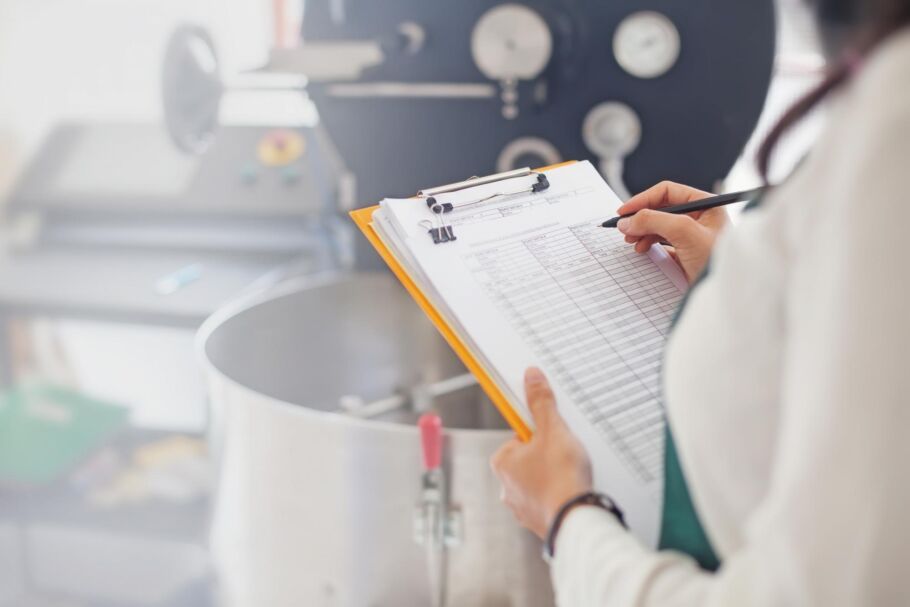
Contributors: Philip Sewell
Date published: 29 June 2021
A practical guide to defective product compensation claims under the Consumer Protection Act
The Consumer Protection Act 1987 (the CPA) was enacted almost 35 years ago in order to implement EU law. The act introduced the concept of “strict liability” into the arena of product supply to certain users. This means that consumers who are injured by defective products can sue manufacturers without having to prove negligence.
This practical guide provides an overview of the CPA for consumers and manufacturers, with reference to recent key cases.
Brexit shall also (subject to its final terms) affect considerably the present legal landscape relating to product liability as well as the ongoing role of the European Court of Justice as case law develops.
Who can claim compensation under the CPA?
The purpose of the CPA is to hold manufacturers accountable for producing unsafe goods. It allows consumers to claim compensation against the producer if the defective product has caused:
- personal injury;
- death; or
- any loss or damage to property which is for private use, occupation or consumption, which exceeds £275 (excluding interest).
The CPA does not cover pure economic loss and there is no liability for any loss or damage to the defective product itself.
Who is liable under the CPA?
The CPA makes three categories of person liable automatically:
- producers: defined as the manufacturer of the product or (if the product is not manufactured) the person who carried out an industrial or other process which gave the product its essential characteristics;
- those who hold themselves out as producers by use labelling or trade mark; and
- importers into a Member State of the EU.
Interestingly, if the claimant who suffered the damage requests the supplier to identify an appropriate person from the above list and the supplier fails to do so within a reasonable period of time, the supplier (including any person along the chain of supply) may also be liable in place of the manufacturer.
The CPA, therefore, makes it straightforward for claimants to identify a party to sue because (a) there are a number of different types of persons who can be sued and (b) the supplier must provide appropriate information to the claimant to enable them to sue the above listed categories of person.
However, a problem might arise if the claimant follows numerous links of the supply chain only to find that it has since broken due to, for example, the company responsible having ceased to trade.
What defences are available to those being sued under the CPA?
The CPA makes six specific defences available to persons being sued under the act:
- The defect is attributable to compliance with any requirement imposed by or under UK or EU law.
- The defendant did not at any time supply the product to another, thus protecting producers in cases where products are stolen or where accidents occur before distribution.
- The defendant is a non-business party, e.g. someone who produces homemade confectionery or bakes food without a view to profit.
- The facts demonstrate that the defect did not exist in the product at the relevant time.
- Producers of component parts have a special defence if the defect exists in the final product that was wholly attributable to the design of the final product, or to compliance, by that component producer, with instructions given by the producer of the final product.
There is also a development risk defence based on the state of “scientific and technical knowledge at the relevant time”.
Where a defective product causes damage
The CPA places strict liability for any damage caused in whole or in part by a defect in a product.
What is a product?
This is a wide-reaching definition under the terms of the CPA, including goods and any product that is comprised in another product, whether that be a component part, raw material or otherwise. Since 2000, liability for damage caused by primary agricultural and fishery produce is also included.
When is a product defective?
According to the CPA, a product is defective “if the safety of the product is not such as persons generally are entitled to expect … in the context of risks of damage to property as well as in the context of risks of death and personal injury”.
The act also provides guidelines with respect to determining all the circumstances to be taken into account when considering defect. This includes:
- the manner in which the product has been marketed;
- its external appearance;
- use of any trade mark;
- instructions and warnings in relation to the product;
- the time when the product was supplied by its producer; and
- what might reasonably be done with the product.
In Wilkes v Depuy International Limited (2016) EWHC 3096 the claimant underwent a hip replacement operation. One component of the artificial hip was a steel femoral shaft called a “C-Stem”. Three years after surgery, the C-Stem fractured, shedding metal debris around the joint and causing the claimant personal injury and metallosis, a blood poisoning condition.
The judge in the case had to determine whether the product was safe and free from defect. The judge did not think that it was relevant to determine whether the product had caused injury. The concern was with safety and not with fitness for purpose. According to the judge, it was not possible to define precisely the expected standards of safety because no medicinal product could be absolutely safe; the potential benefits of its use had to be balanced against the risks of it being employed.
The relevant EU law on product liability did not define “defect”, and so the judge decided that a “holistic approach” balancing all relevant considerations was appropriate to assess whether a product was defective. The judge thought that there were five circumstances for particular scrutiny:
- risk benefit and the “avoidability” of the defect;
- whether the product was “standard” or “non-standard”;
- compliance with appropriate standards;
- compliance with any regime under which the product was regulated; and
- any warnings given about the product.
In the Wilkes case, the judge ruled against the claimant, deciding they had failed to establish that the C-Stem suffered from a manufacturing or design defect as it did not fall below the safety requirements that people were generally entitled to expect at the time that it was put into circulation. This approach has been applied in subsequent cases.
Risk: benefit and avoidability
Clearly, certain products in circulation are inherently unsafe. They are not, however, necessarily defective: for example, a soldering iron, a shotgun or hot coffee. In B (A Child) v McDonalds Restaurants Limited 2002 EWHC 490, piping hot coffee served in substantial polystyrene cups was not considered to be defective because that was not of itself a defect.
In considering the McDonalds case, it was determined by the judge in Wilkes that the ease and extent to which a risk could be eliminated or mitigated might influence the level of safety that the public generally is entitled to expect. So, for example, an insulated cover for the top of the polystyrene cup might be a relevant factor in that respect.
Standards and regulatory regime
The fact that a product does not meet mandatory standards and regulations applicable to it may well suggest that it is defective. But in Pollard v Tesco Stores Limited 2006 AER 186, a case in which a child had ingested dishwasher powder after prising apart a child resistant lock that did not comply with British Safety Standards, this argument was not sufficient. In that case, the judge appeared to focus on the “actual” expectations of consumers rather than on a legal test of regulation/safety standard compliance that persons generally are “entitled” to expect.
Proving a product is defective
To succeed a claimant must show that a product was defective but not exactly the precise cause of the defect.
The relevant circumstances, and the weight given to each circumstance, may differ depending on the product and the nature of the complaint. For instance, in Gee and others v DePuy International Limited (2018) EWHC 1208, a case involving a prosthetic hip, the court decided that the natural propensity of hip prostheses to fail could not be considered a defect for the purposes of the act.
While the judge in Wilkes dismissed standard/non-standard classification as necessary in the assessment of defectiveness, the court in Hastings v Finsbury Orthopaedics Ltd (2019) CSOH 96, another hip replacement case, stated it was “almost inevitable that…there would be some focus on whether the product was within or out with producer’s design specification”.
The role of causation
In addition to the defect, the issue of causation might have to be examined in some detail.
The claimant must show that there is a defect and that it caused the loss complained of so the court can be satisfied that other possibilities can be eliminated. In Love v Halfords Limited 2014 EWHC 1057 a fractured bicycle part was found to be a result of having been bent and then repaired (by some unknown person) rather than due to a defect in the product itself.
Where the claimant is required to pursue a case based upon a defect causing an increased risk of harm it is questionable what precisely the claimant has to prove. In XYZ v Schering Healthcare Limited (2002) EWHC 1420, a case concerning oral contraceptives, it was suggested that a claimant was required to prove that the risk of the adverse event had more than doubled. But in Sienkiewicz v Greif (2011) UKFC 10, which concerned negligent exposure to asbestos, the Supreme Court took a very different view as to the appropriateness of the “doubling of the risk” test and whether further evidence beyond the risk identified by the epidemiological evidence was necessary.
A successful approach to causation could be taken on the basis of material contribution, where the courts are satisfied that the level of safety was less than it ought to have been.
Limitations
There are specific limitation periods in relation to the CPA.
Personal injury claims
Personal injury claims must be brought within three years of the date on which the cause of action occurred, or (if later) the date of the knowledge of the injured person (Limitation Act 1980). The court could allow an action to proceed if it would be equitable to do so even if this three-year period has passed.
If the product causes somebody’s death, that person’s dependants might be able to bring a claim under the Fatal Accidents Act 1976. If the deceased’s claim was not already too late in time, a dependant could bring a claim within three years of the date of death or the date of knowledge of a person for whose benefit the action is brought.
Damage to property
If the product causes damage to property then it should be regarded as having occurred at the earliest time at which a person with an interest in the property had knowledge of the material facts about the loss or damage. Such a claim must also be brought within three years from the date of accrual of the action or the date of knowledge of the claimant or (if earlier) any person in whom the cause of action was previously vested.
Ten-Year Longstop Provision
The Limitation Act 1980 sets out a 10-year longstop which extinguishes the right of action after a period of ten years has run from the “relevant time” when the product was last supplied by someone who was a producer, purported producer or importer.
The court in theory has a discretion under the CPA to allow for substitution of the defendant after the expiry of the ten-year period but UK law should not enable the substitution of one defendant for another during proceedings, in a way which permits a producer to be sued after the expiry of the 10-year longstop.
How has Brexit impacted consumer protection law?
The law has been amended to address regulatory gaps in product safety rules following the end of the transition period and make specific provision for the British market from 1 January 2021.
The CPA is amended as follows:
- Previously any person who imported a product into an EU Member State from outside of the EU would be subject to CPA strict liability. However, this will now apply to any person who imports the product into the UK from any country outside the UK. Therefore, distributors who import products from the EU will now become importers of products into the UK and subject to CPA strict liability. As importers, they will be required to display their name, address and a product reference on products supplied in the UK.
- A defence was previously available where the “defect is attributable to compliance with any requirement imposed by or under any enactment or with any EU obligation”. This defence will continue to apply to the extent that the specific EU law or obligation has been retained by the UK following the transition period.
When deciding whether to depart from any retained EU case law, the Withdrawal Act requires English and Scottish courts to apply the same test as the Supreme Court would apply in deciding whether to depart from their own case law. It is to be predicted that the courts will continue to take into account EU case law in interpreting the CPA even though they are no longer strictly bound by it.
For more information please contact Philip Sewell, Partner in our commercial disputes team.
With additional reporting by Ella McIntosh-Farrelly.
Contributors:
Philip Sewell
Partner
To find out more contact us here
Expertise: Product Liability















